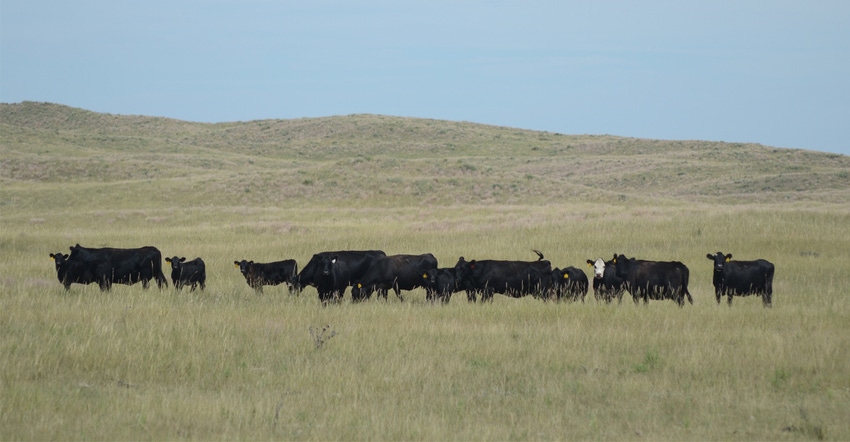June 18, 2019

By Jay Parsons and Jim Jansen
Several enhancements and improvements to the Livestock Risk Protection insurance program will take effect July 1.
LRP is an insurance contract offered by the USDA Risk Management Agency to help livestock producers protect against unexpected downswings in market price.
One change is that LRP insurance coverage for fed cattle, feeder cattle and swine is expanding to include all 50 states. Several other changes will be of interest to Nebraska cattle producers:
Subsidies. LRP premium subsidies will increase from 13% for all coverage levels to a range from 20% to 35% based on the coverage level selected.
Per-head limits. The per-head limits will increase from 1,000 head per coverage endorsement and 2,000 head per producer per year (July 1 to June 30) to new levels of 3,000 head per coverage endorsement and 6,000 head per producer per year.
Trading requirements. Chicago Mercantile Exchange trading requirements are being updated to allow for more insurance endorsement lengths to be offered to producers to buy. Currently, a daily volume of five traded contracts is required to offer LRP endorsements.
Price adjustment factor. The price adjustment factor for predominantly dairy cattle is being modified to 50% for both weight ranges of feeder cattle to more accurately reflect market prices. The current adjustment factors range from 80% to 85% based on weight class.
Price and market uncertainties pose a significant risk to cattle producers with a substantial amount of money invested in breeding livestock, land and other infrastructure. Price protection through an insurance tool such as LRP could be an important risk management tool for producers to protect that investment.
Like most insurance products, producers should not buy LRP hoping to collect on it. All else being equal, the preference is for good, strong market prices to prevail. However, it should be of interest to producers considering the need for market price protection to see how LRP has performed over the years.
LRP is available in many forms, terms of length and coverage levels. For the purposes of this article, Nebraska Extension economists evaluated the LRP feeder cattle contract for steer calves weighing less than 600 pounds from 2009-18, looking at a 13-week coverage endorsement taken out Aug. 6 (or the subsequent Monday if Aug. 6 was on a weekend) of each year at the highest coverage price available.
This resulted in an ending date of Nov. 5-7 of each year. The premiums reported here are the producer premiums after the 13% subsidy been paid by USDA under the current policy rules.
As shown in an Extension table, over the 10 years analyzed, total producer premiums collected exceeded indemnities paid out by an average of $1.15 per hundredweight.
The indemnity ratio over these 10 years was 0.68, meaning that if a producer consistently insured the same quantity each year, each $1 in premiums paid into the program would have yielded $0.68 back in indemnities.
Over the 10 years, actual ending values were more than expected six times and less than expected four times, but in 2010 when it was less than expected, it was not below the highest coverage level available and no indemnity was paid out.
The last two rows in the table show what the results would have been had the new higher subsidy rates been in place. The increased subsidies would have reduced the producer premiums by an average of $0.63 per hundredweight and increased the indemnity ratio to 0.83 over this 10-year span.
The primary purpose of LRP insurance is to provide producers with a tool to protect against unexpected downward price movements in the national market. In 2009 and 2016, it did its job well. The hope is that prices are strong and it is not needed.
However, for producers who are concerned about the markets moving against them, it can be a valuable tool that helps meet their risk management goals for protecting returns. With the upcoming changes to the program, it becomes a more affordable and available tool for producers to incorporate into their marketing programs.
For information on the details of LRP insurance for cattle, readers are encouraged to consult two University of Nebraska-Lincoln NebGuides on LRP-feeder cattle and LRP-fed cattle.
Parsons is a Nebraska Extension farm and ranch management specialist, and Jansen is a Nebraska Extension agricultural economist.
Source: UNL BeefWatch, which is solely responsible for the information provided and is wholly owned by the source. Informa Business Media and all its subsidiaries are not responsible for any of the content contained in this information asset.
You May Also Like




